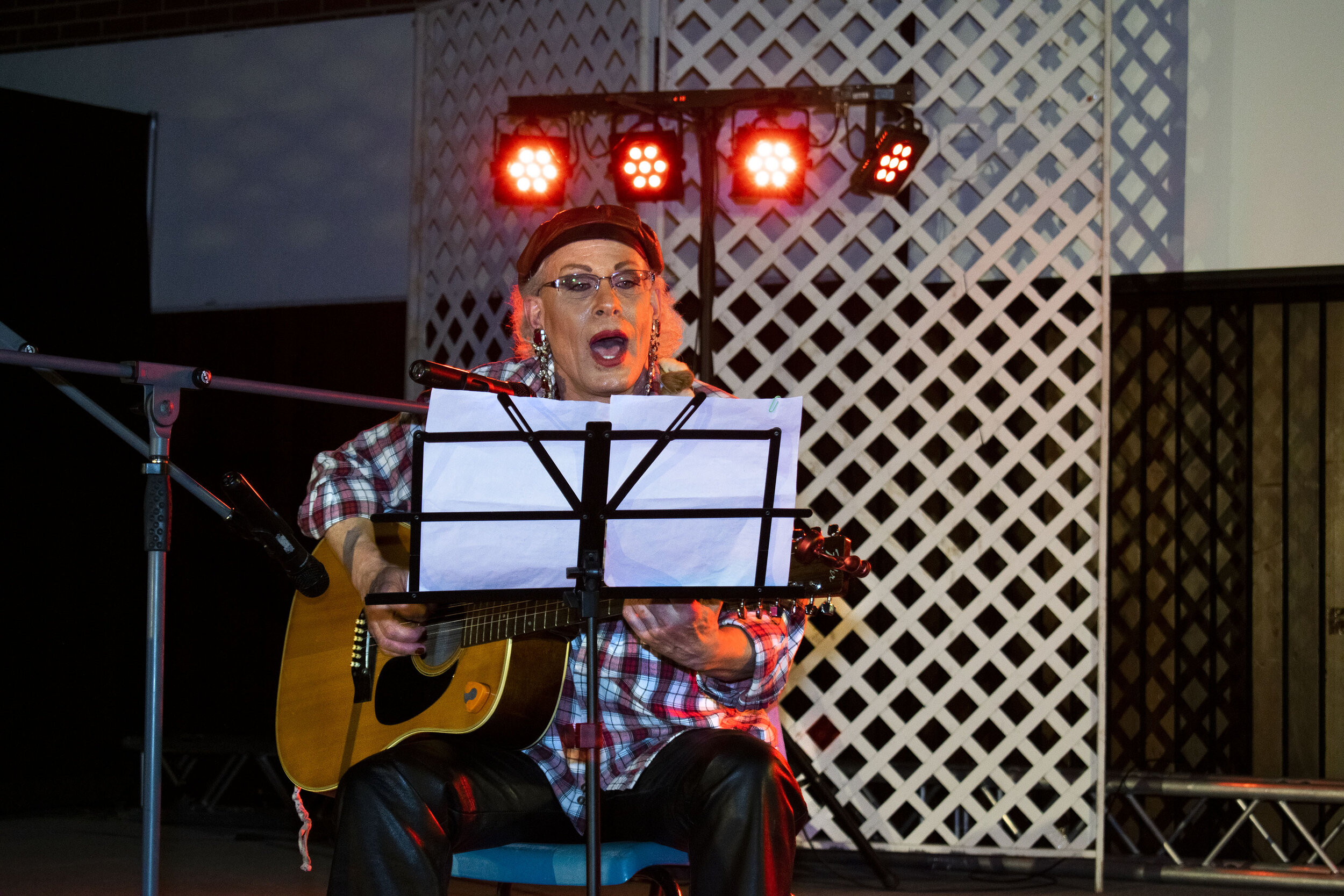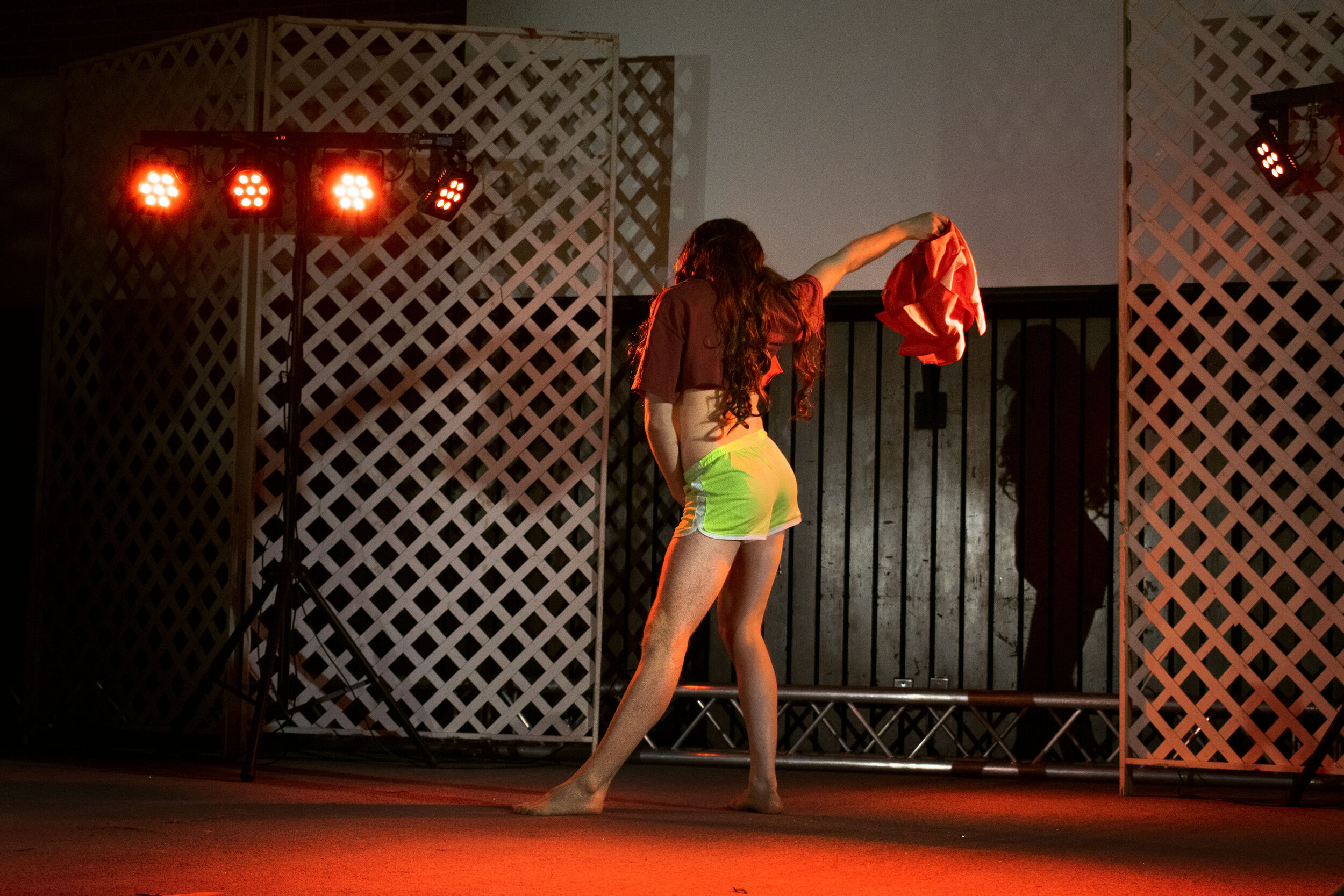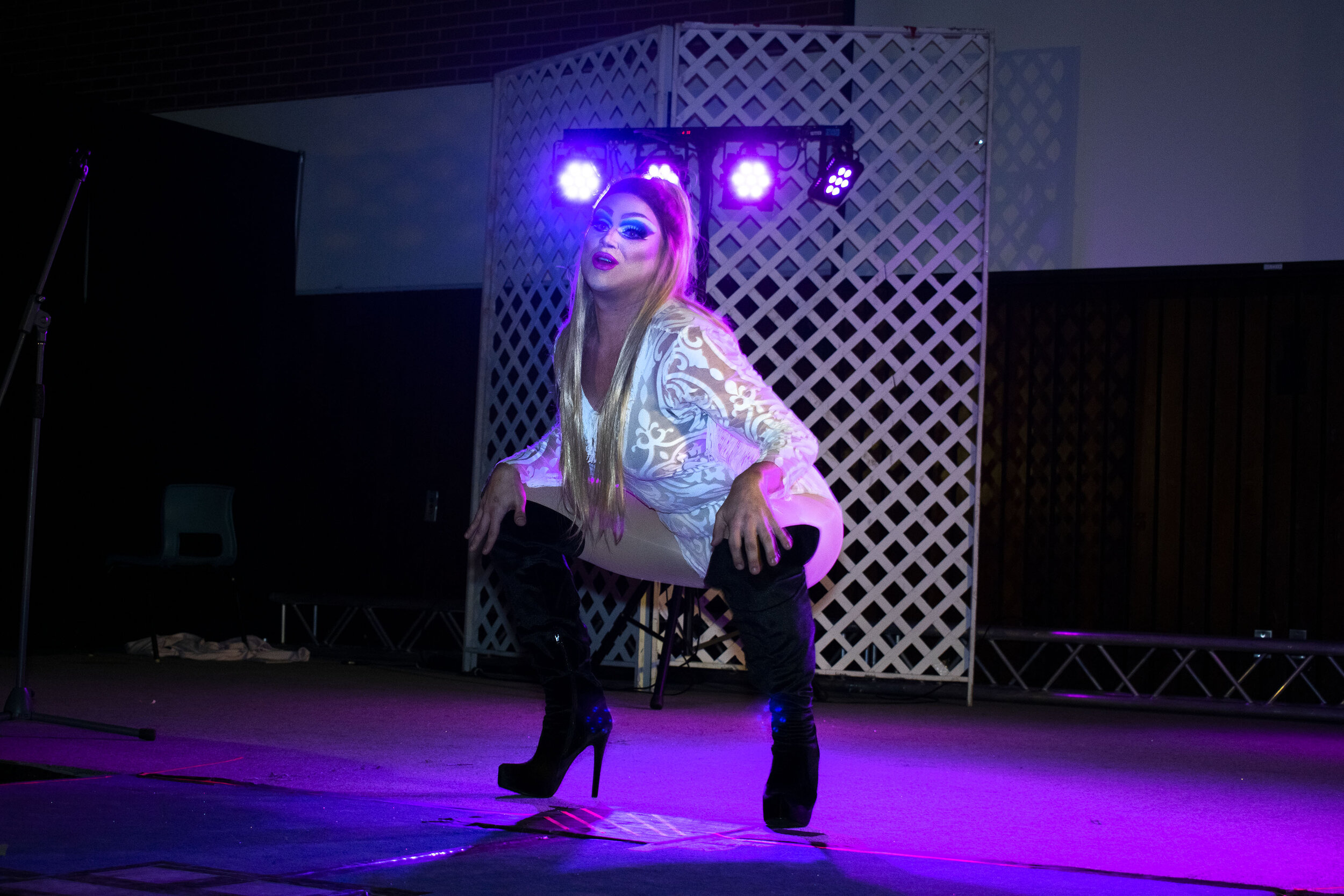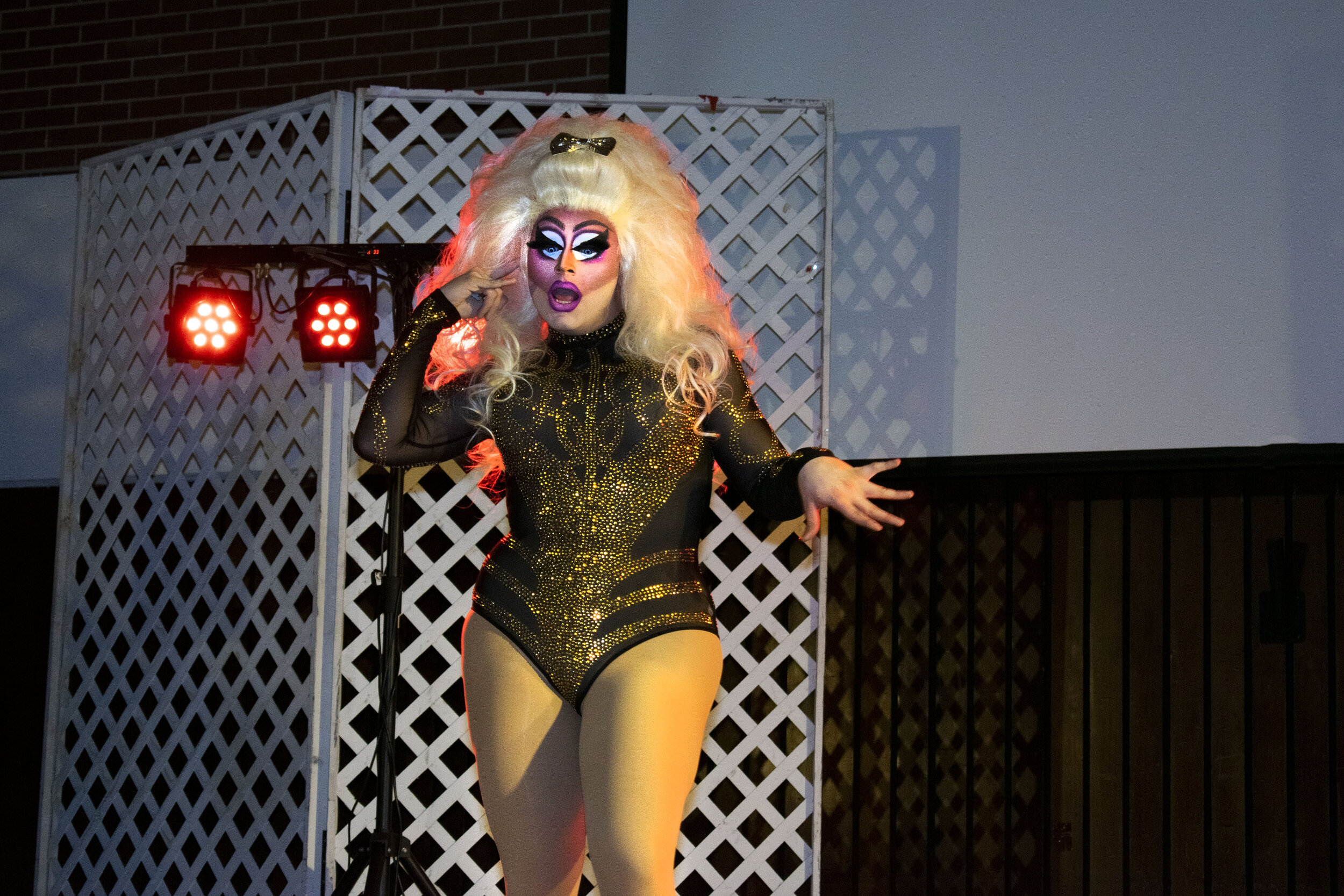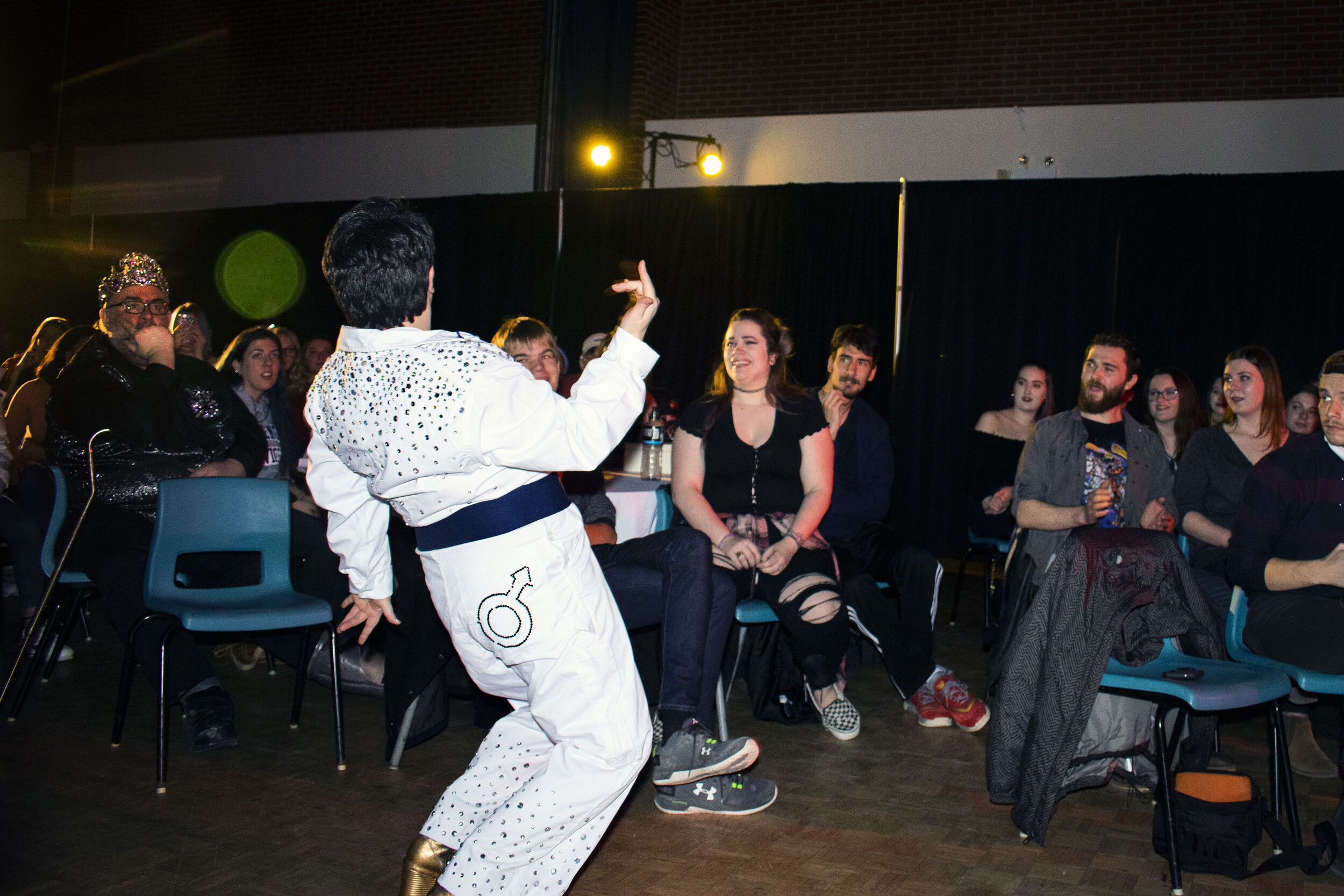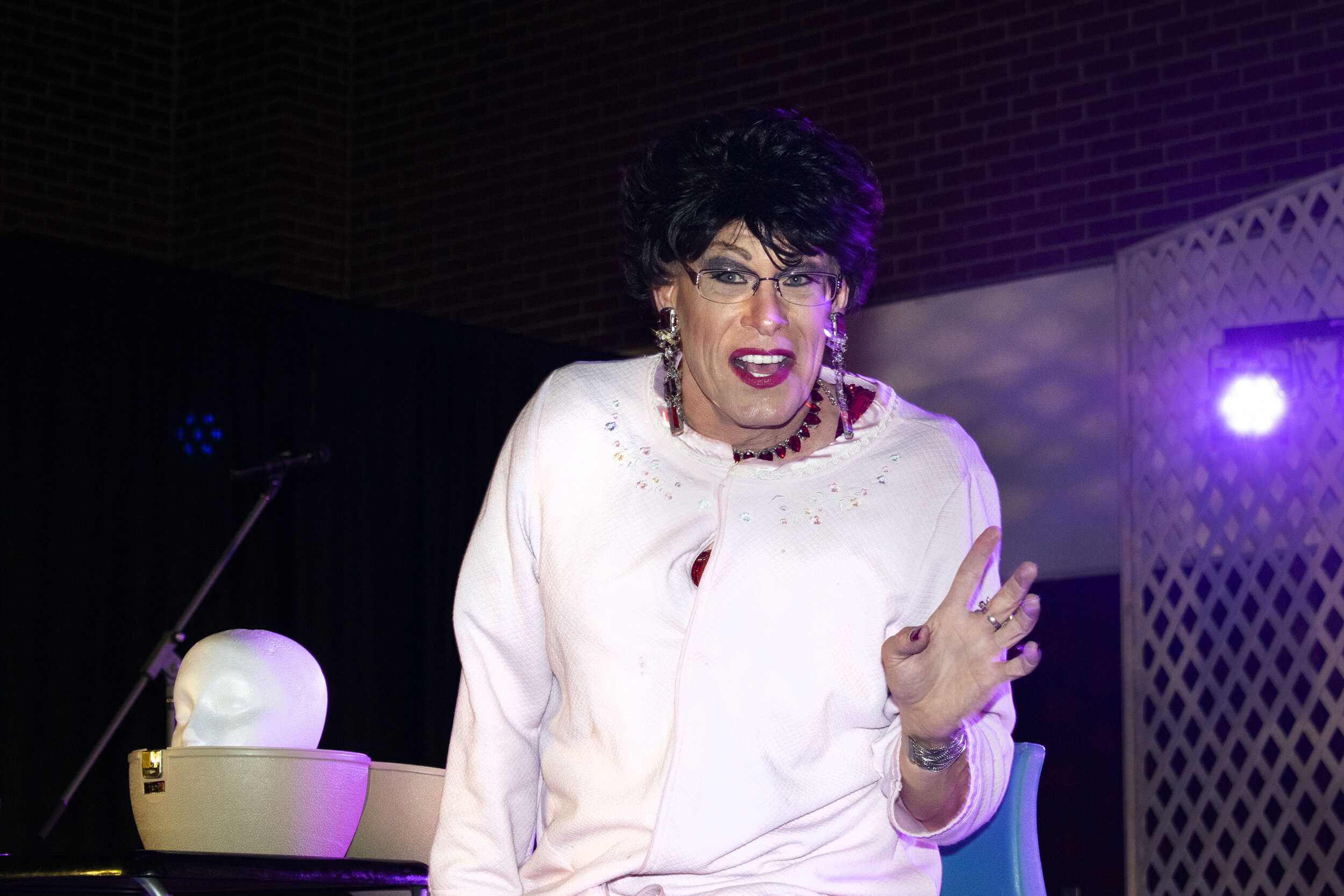She’s Back! Priscilla, Queen of the Highlands: “Rise of Priscilla”
/Priscilla: Queen of the Highlands is perhaps the most anticipated event on the StFX campus. The show, organized and produced by Dr. Chris Frazer (who some may also recognized as C. Leah Cruz or Joannie Cash), began in February 2005 when Frazer was appointed as 2SLGBTQ+ faculty advisor at StFX, following a number of incidents of homophobic assault on campus. Frazer, alongside Dr. Nancy Forestell and Dr. Clare Fawcett, was applying for a grant to facilitate a workshop centred around 2SLGBTQ+ experiences in rural areas, and needed to include an event. The group decided on a drag show, contacted the Imperial and Sovereign Court of Nova Scotia (similar to a rotary club for drag queens, Frazer explains), and put on a sold-out show in the KMC conference rooms.
This first show, Frazer claims, was “completely amateur,” relying on a Discman and a single set of speakers for music. However, over the past 15 years, the show has grown tremendously—transforming into a full production with professional light and sound, and moving from one conference room to two, and then to the bigger stage in the Bloomfield Centre MacKay room. Since the first show, Priscilla has raised thousands of dollars for X-Pride and other 2SLGBTQ+ focused organizations. “It’s always been a way of raising money and helping to create community,” shares Frazer. The show has played a big part in creating queer space in Antigonish, which Frazer says there “just isn’t much of.”
The show means a lot to a lot of people, including the performers. Jason Spurell, who performs as Rouge Fatale and has been part of Priscilla since the very beginning, shares that the audience at Priscilla is one of their favourites of all time. “The response, the happiness, the pride they have. Not a lot outweigh it.” In general, they note that rural crowds are most often more excited than urban ones, given that drag shows tend to decrease in frequency the further you get from a city-centre. One of Spurell’s favourite moments from the show was inviting their cousin (who used to attend StFX), up on stage— “I would bring her up on stage with me and get the whole audience to call her by her childhood nickname. She hate/loved it!”
Frazer says that Spurell’s sentiment is echoed by a number of other queens as well: “It’s their favourite show.” In fact, legend has it that Priscilla always coincides with the night that Antigonish gets its biggest storm or blizzard of the year—but the queens, and the audience, never seem bothered by the harsh weather. “There have been times where we were probably the only thing open in Antigonish—which we shouldn’t have been—and the queens had no business driving down from Halifax, but they did anyway. It says a lot about the show.”
Photos by Adelaide Strickland
While the show has only grown more and more successful, they’ve also run into difficulties financially. Tickets always sell out, yet the rising costs of space and security over the years have driven ticket prices up. Last year, for the first time, the show didn’t break even. “We’re not a money making venture, but it feels like we’re being forced to move that way,” says Frazer. “I’m really resisting that, because that’s not the point of the show … It has to be accessible, financially and physically.” Despite struggle, however, support from the community is keeping things going. Frazer recognized Impact Sound as a key supporter; the company has consistently provided a discount for their services, given the charitable nature of the show. The audience, of course, also plays a big role in the show’s continued success.
There are a number of ways that students and community members can get involved with and support the show. Ticket sales, according to Frazer, are always a good time— “it’s really rewarding to see the enthusiasm for that show build up as the tickets start to sell.” Proceeds from ticket sales and donations made at the show this year will be directed to Rainbow Railroad, an organization helping 2SLGBTQ+ refugees escape persecution and violence. Organizers are looking for support selling tickets in advance and at the door, as well as with the set-up and break-down of the production. Frazer also encourages people to think about performing— “it’s always been a part of our tradition that we encourage people to get on the stage” —in drag, or out of drag. The show welcomes Kings, Queens, genderfuck performers, burlesque performers, and pretty much anyone looking for a moment in the spotlight. Of course, for those who may not be all that keen on getting on stage, one of the best ways to support the show is to buy a ticket, and show up. “Just come, be yourself, and be fabulous,” says Frazer.
This year, Priscilla will be held on January 31st in the MacKay room. Tickets will be on sale starting January 22 at the X-Pride table in the Bloomfield lobby, and will cost $12 in advance, $15 at the door. Anyone looking to get involved in the show should contact Chris Frazer either in person or via email at cfrazer@stfx.ca.
Priscilla is part of X-Pride’s Pride Month at StFX. Other events include Amateur Drag Night, a sex-ed workshop by Venus Envy, a queer music night at the Inn, Sex Toy Bingo, and Rainbow Party. Details for these events can be found on Instagram @xpridesociety or on facebook in the X-Pride 2019-20 group.

